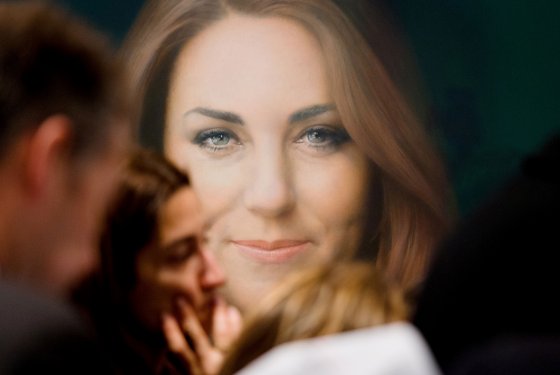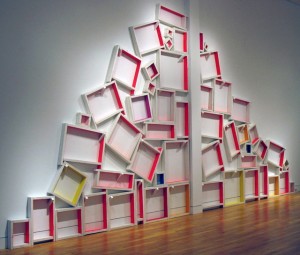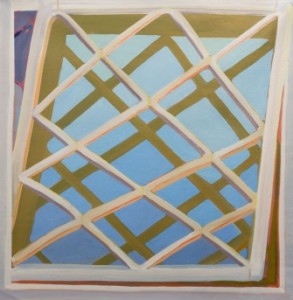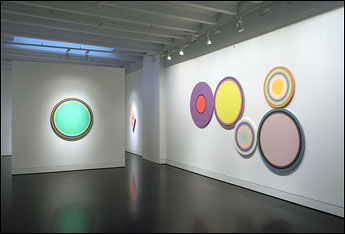New York Magazine: Jerry Saltz on Kate Middleton’s Terrible Official Portrait
Art usually only makes the news in America when the subject is money. Here, the dollar is king. In Great Britain, the queen is “king.” Even though it’s still a mystery to many Americans, the British populace’s unhinged fixation on and fetishization of their ever-beloved royal family knows no bounds. Combine this national obsession with one of those garden-variety fits of art shock the English love, and sparks will fly. Sure enough, last week Britain went bananas about the new royal portrait of the 31-year-old wife of Prince William, Kate Middleton, the Duchess of Cambridge. By Saturday, the front page of the New York Post blared news about the “fury” the painting was producing in England. http://www.vulture.com/2013/01/jerry-saltz-on-kate-middletons-portrait.html
Art Fag City: Critics Respond to a Call-to-Arms, Here’s What You Need to Know by WHITNEY KIMBALL
Last month, critic Irving Sandler published a call-to-arms on the state of criticism, “Art Criticism Today” in the December-January issue of The Brooklyn Rail. (This follows a 2006 call-to-arms “A Call to Art Critics,” and response essays, which, already, does not bode well). Sandler believes that private interests are squelching the medium, using John Coplans’s firing from Artforum in 1978 as an example. He also believes criticism is unfocused, due to a lack of some clear art categories with which to build a case (“the growth of pluralism”). Sandler asks: “Who’s in charge here? Can anyone stop the player piano before it rolls us in the trough of a tidal wave? How did we get to be so many?” http://www.artfagcity.com/2013/01/17/critics-respond-to-a-call-to-arms-heres-what-you-need-to-know/
Hyperallergic: Scraps and Squares: Cordy Ryman’s Subversive Formalism by Thomas Micchelli
What’s the difference between the lackadaisical and the slapdash? Apparently, a great deal. Although he is employing the same strategies and materials that he used in his 2010 solo exhibition at DCKT Contemporary on the Lower East Side, I found the just-opened Cordy Ryman: Shuffle / Scrap / Echo at the Visual Arts Center of New Jersey to be a far more convincing excursion.
In the show two years ago, Ryman’s ambition was evident in the enormous wooden relief, “Scrap Wall” (2009-2010, 113 x 108 x 10 inches), that he constructed in front of the gallery window. But the exhibition was undermined by a crowded installation and what felt like a lackadaisical, even apathetic approach to materials. http://hyperallergic.com/63707/scraps-and-squares-cordy-rymans-subversive-formalism/
Baltimore Citypaper: The World is Flat By Michael Farley
Flatness was a defining obsession of 20th century painting. The destruction of traditional perspectival space in the picture plane has defined everything from cubism through Ellsworth Kelly and Andy Warhol all the way up to Takashi Murakami at the turn of the millennium, making “flat” one of the prime qualities sought in good, honest painting.
Local painter Mary Anne Arntzen explores flatness, as well as depth and transparency in SEE THROUGH, her first solo exhibition, presented by ICA Baltimore. Inspired by visual obstructions in the built environment—perforated cinder-block walls, lattices, and chain-link fences—Arntzen’s canvases sometimes allude to atmospheric depth through a masterful use of color relationships, only to be negated by painterly lines weaving through the rendered volumes, disrupting the viewer’s suspension of disbelief in the imagined space. Clearly well-educated in the strategies of representational painting (she received her MFA from MICA’s Mount Royal School of Art in 2010), Arntzen slyly subverts the figure/ground relationship by drawing attention to the materiality of her medium. Varying line widths, generously slathered oil, and the ever-present index of the artist’s process remind viewers that they are looking at a flat, opaque image despite all the implications of depth and translucency that her skillfully mixed palette can conjure. http://citypaper.com/arts/visualart/the-world-is-flat-1.1429927
Washington Citypaper Arts Desk: “Linling Lu: Lilac” Borrowing from the Color School? Totally fine. But Linling Lu should take more risks By Kriston Capps
Nothing about Linling Lu’s tragically pretty paintings at Hemphill Fine Arts will be lost on Washington audiences. In painting targets and shaped canvases, she appears to channel Kenneth Noland, a darling of the 1970s Washington Color School whose work can be seen regularly in D.C.’s museums. Washington has for too long grappled with the legacy of the city’s brief moment in the art world’s spotlight; why shouldn’t a recently arrived painter from Guizhou Province, China?
Don’t over-read the circles and chevrons in Lu’s paintings. While any painter from the States who decided on abstract paintings of concentric circles on circle-shaped canvas would be quoting Noland—who pioneered the shaped canvas and many of the discoveries it afforded within the Color Field school of abstract experimentation—Lu isn’t winking in Noland’s direction. She’s embracing a mold, not breaking it, and for totally different purposes. http://www.washingtoncitypaper.com/articles/43456/linling-lu-lilac-at-hemphill-reviewed-borrowing-from-the-color/
LA Times: Sundance 2013: How did a newbie make an unapproved film in Disney parks? By Steven Zeitchik
About three years ago, Randy Moore, a struggling screenwriter living in Burbank, had an out-there idea: What if he took a tiny camera and, without asking permission, began shooting a narrative movie at Disney theme parks?
Moore had been visiting Disney World in Orlando, Fla., with his now-estranged father since he was a child, and he’d also begun taking his two children, then 1 and 3, to Disneyland. He thought that juxtaposing the all-American iconography of Mickey Mouse with a dark scripted tale would be cinematic gold, or at least deeply weird.
So with the help of an extremely small Canon camera and some very game actors and crew, the director began shooting a movie guerrilla-style. Read the rest here.









